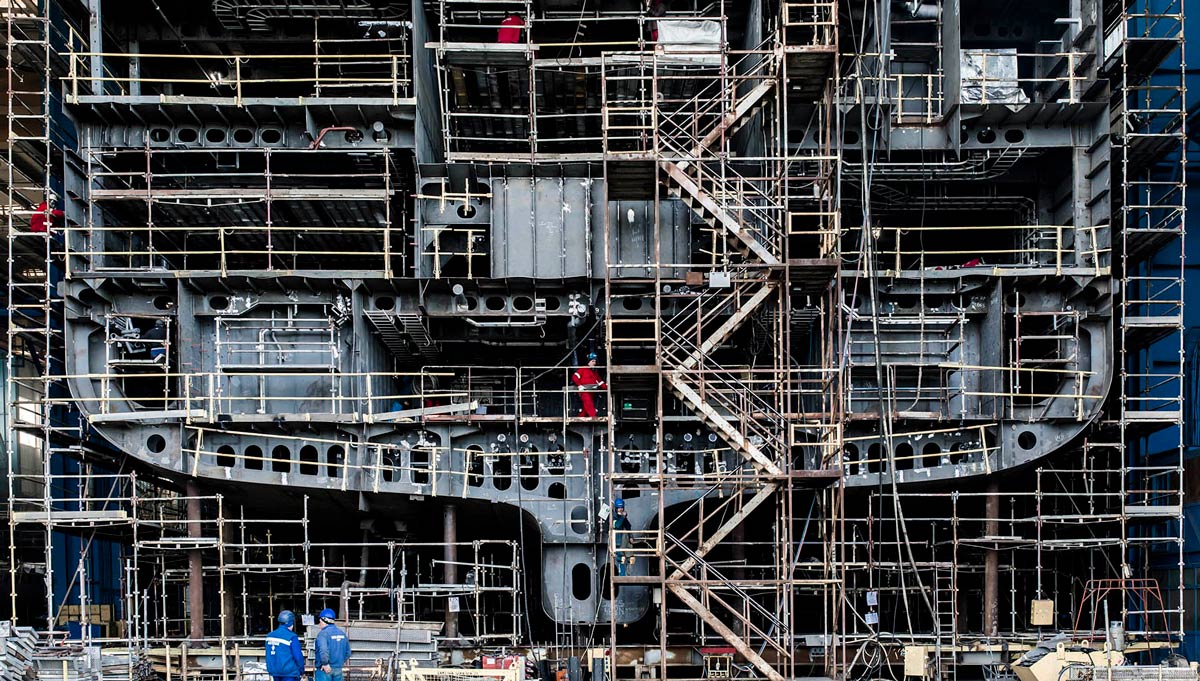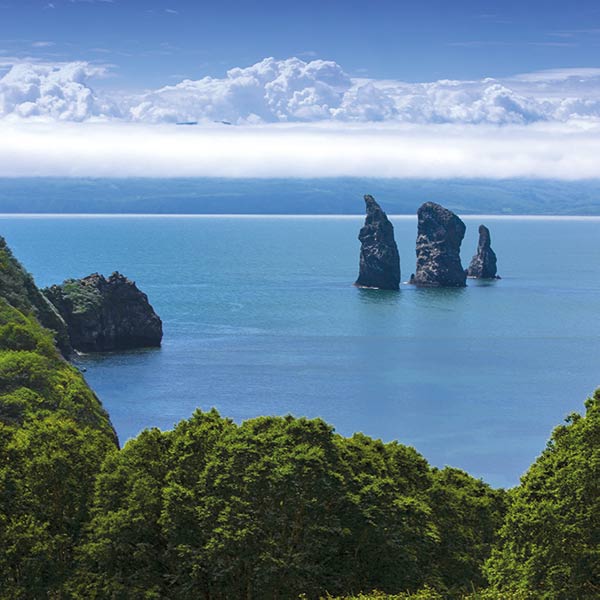
Photo: Guillaume Plisson

Photo: Guillaume Plisson
A superyacht with power and purpose
REV will be seaworthy by 2020, and there are grand plans for this superyacht right from the start.
The world’s most ambitious superyacht – REV – is inching closer to completion. At 183m long, this will not only be the biggest yacht ever launched, it will also be the most ambitious – with pioneering scientific research and groundbreaking missions all part of the plan.
The owner, a Norwegian by the name of Kjell Inge Rokke, is clearly passionate about the environment. “He has spent most of his career working in and around the ocean and he has a deep sense of commitment to make sure ocean health improves,” says Lawrence Hislop, communications manager at REV Ocean. “He is very hands-on and takes a very strong interest in progress and making sure the initiative will have the utmost positive impact and focus on ocean solutions.”

Render of REV

Render of REV
Progress is perhaps an understatement. Ordered back in 2017, the yacht, designed by Espen Oeino, was originally planned to be around 140m, but as the ambition of Rokke grew, so did the yacht. There is now capacity for up to 90 people on board. Rokke and his family and friends will have their own space, but crucially, there is room for a multitude of crew members, scientists and researchers. There will be mingling between the two groups, but ultimately the main purpose of REV is to study the world’s oceans. Even income from charter activity will be used to fund the ship’s research operations.
The yacht has myriad innovative design features that will help it achieve its goals, from a 40-seat auditorium for scientists to discuss their discoveries to wet and dry laboratories and a lecture room. The boat’s LARS (launch and recovery system) is also pretty unique. “REV’s main hangar will feature a moon pool, an opening in the hull allowing direct access to the water below,” explains Hislop. “This will allow underwater vehicles to be lowered and raised through the opening.”

Photo: Guillaume Plisson

Photo: Guillaume Plisson
There’s also a pioneering trawl system, for bringing live species on board via a vacuum hose, enabling the team to study rare species of fish from depths of up to 3000 metres. The list of innovative features goes on. There’s an underwater hydrophone system for listening to ocean mammals, a media editing suite for making documentaries, a dive centre with a decompression chamber, an R&D workshop, two helipads… and that’s just for starters.
But with ambition like Rokke’s, all of these features are imperative. He and his team are focusing on three priority areas; climate change and ocean interactions, plastic pollution and fisheries/bycatch reserve. Within these three areas there will be studies to research the effects of plastic waste on marine life, mapping of environmental pollutants and water sampling to reveal microplastics, to name just a few.

Photo: Guillaume Plisson

Photo: Guillaume Plisson
“We also hope to attract research that is focused on ocean solutions rather than monitoring and assessment,” says Hislop. “There will probably be a wide mix of international multidisciplinary projects that come onboard.”
So who will get to come on board this pioneering vessel? “There will be an open call for proposals, where any researcher around the world can submit an application, which will then be reviewed by the REV Ocean science team, advisory board and a few other review processes, before the final selection is made,” says Hislop. Criteria are currently being organized and within the next couple of months, people will be able to check the website for application procedures.

Photo: Guillaume Plisson

Photo: Guillaume Plisson
For the moment though, REV is still about halfway complete and over the next month is expected to go to Norway and then Germany for the finishing touches. “The vessel will be seaworthy by end of 2020, but we’ll then need to do some calibration of the science equipment on board and sea trials for a few months,” says Hislop. “We are expecting to have our first science missions in mid-2021.”
The first cruise is planned for the Arctic, followed by a series of missions en route to Antarctica. “We are just starting to make our first-year cruise plan for 2021-2022. There is a science and advisory committee who will help prioritize research areas around the world,” explains Hislop. With the range and equipment to make autonomous expeditions around the world for up to 114 days at a time, there really are limitless opportunities for projects and exploration.

Photo: Guillaume Plisson

Photo: Guillaume Plisson
In the meantime, there is a hectic schedule of events for REV to attend. This month alone, the team will be presenting at environmental conference OceanObs in Hawaii and the Blue Ocean 1.0 in Norway, as well as participating in the UN General Assembly’s Climate Action Summit. The Blue Economy Conference in California and the Santiago Climate Change Conference will follow closely behind.
For the REV team, who are unanimously linked by a passion to save the oceans, there is simply no time to spare.



